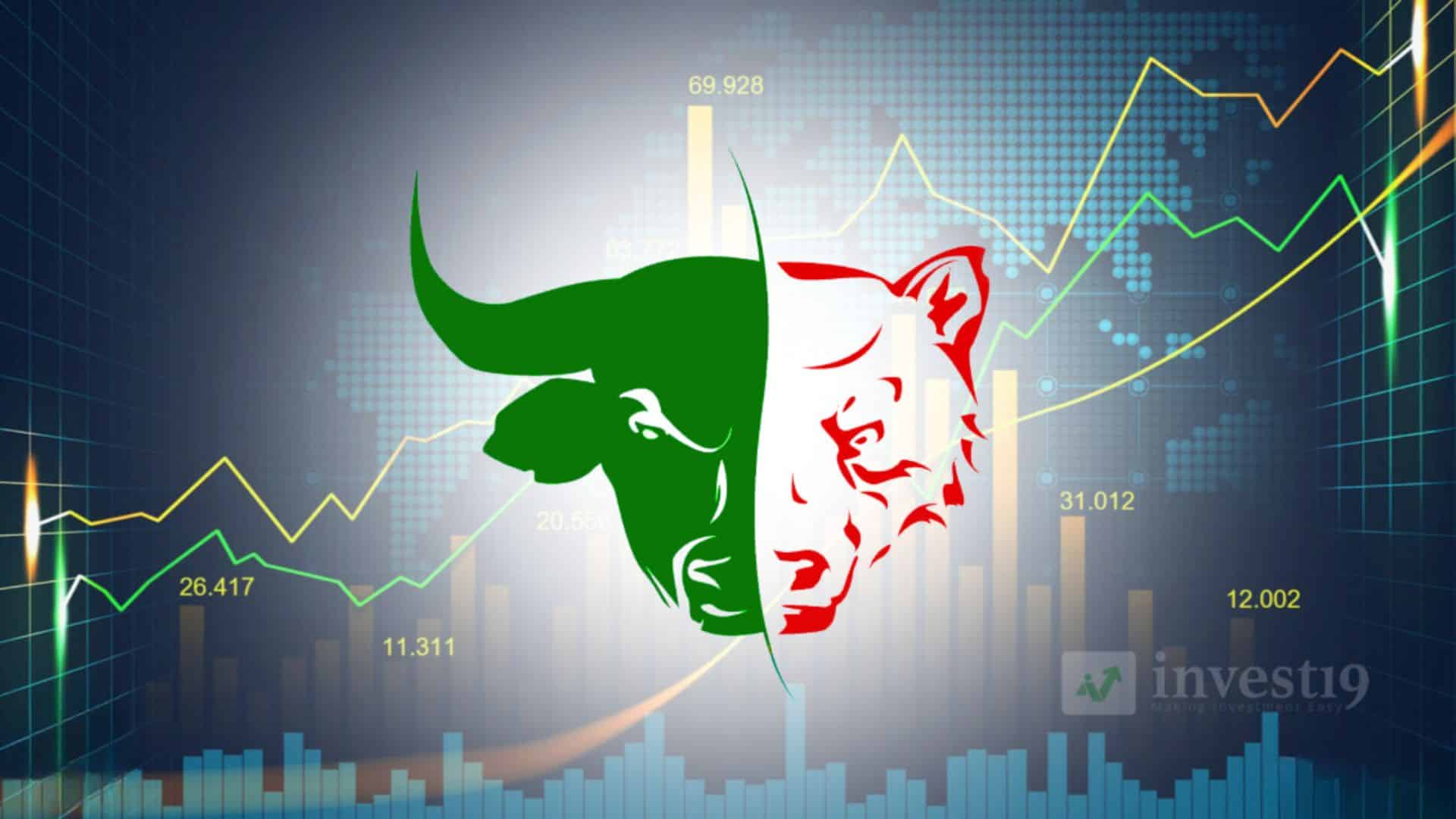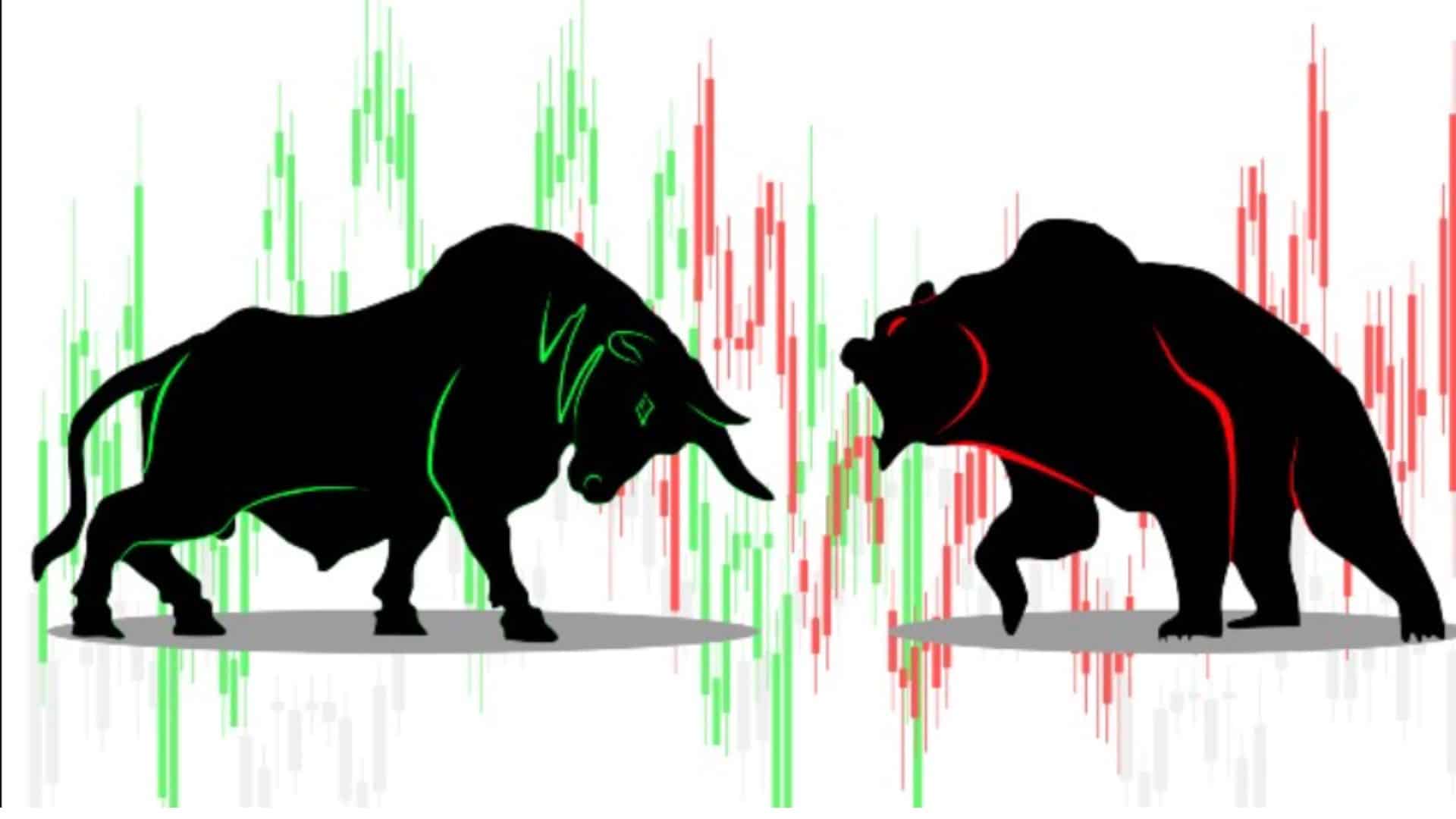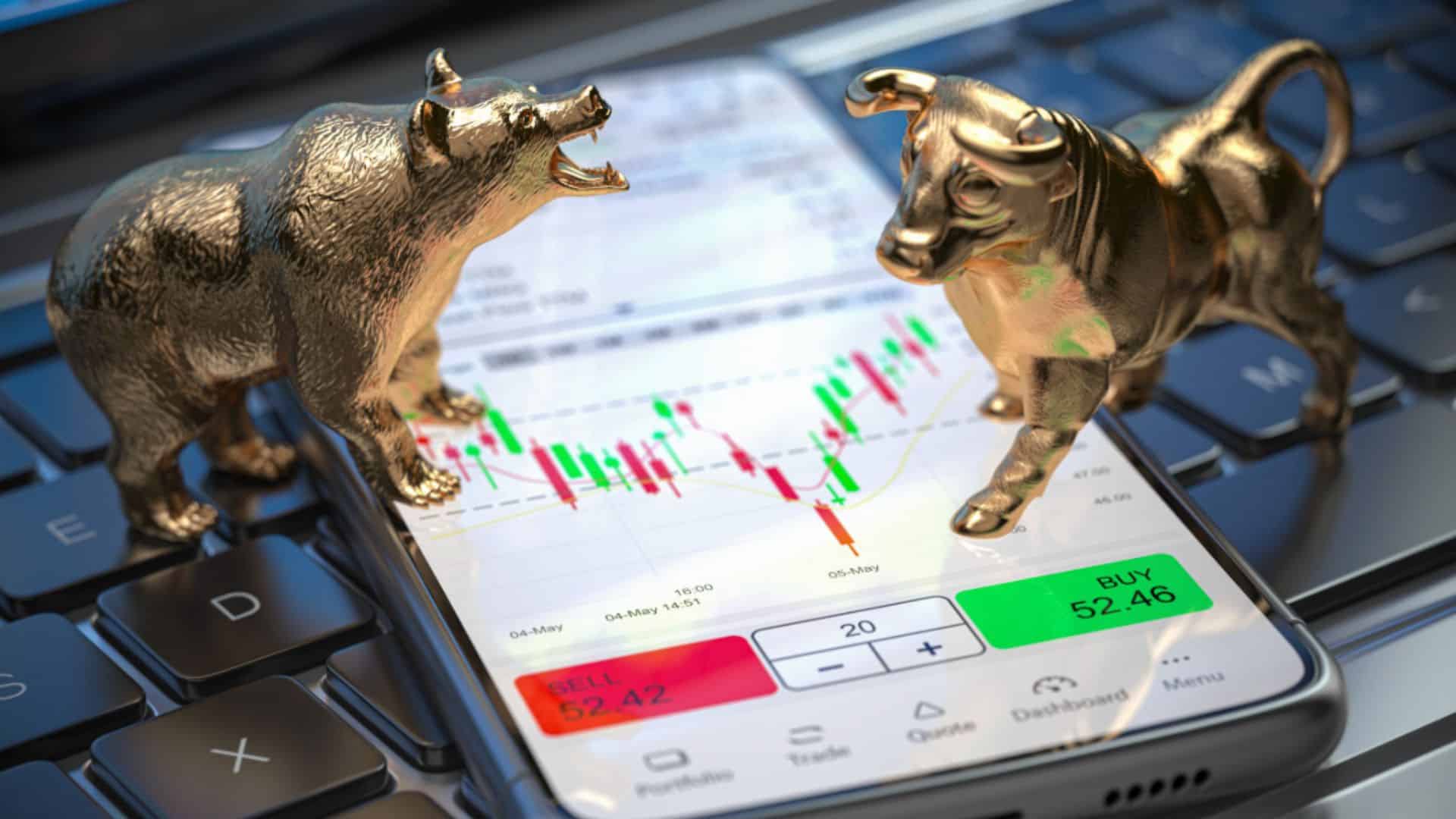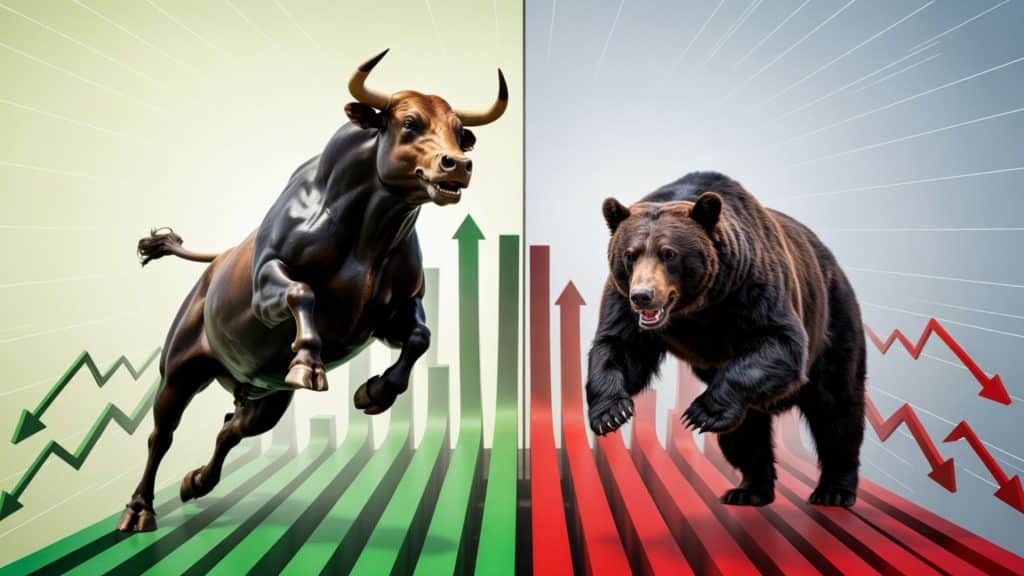Have you ever heard traders talk about “bull” and “bear” markets but felt lost in the conversation? You’re not alone.
Many new investors struggle with these terms that seem to pop up in every financial discussion. The stock market can sometimes feel like a foreign language.
Bull and bear markets shape how we invest our money and plan for the future.
This blog shows you exactly what bull and bear markets mean, how to spot them, and what they mean for your investments.
By the end, you’ll understand these market cycles like a pro and feel confident making smarter financial decisions.
What is a Bull Market?
A bull market happens when stock prices rise steadily over time. Think of a bull attacking – it thrusts its horns upward. That’s exactly how stock prices move in this type of market.
Here’s what defines a bull market: stock prices rise by 20% or more from recent lows, reflecting strong investor confidence and robust economic conditions.
During this period, trading volume typically increases, and the upward trend can last for several months or even years, signaling a positive market environment.
You can spot a bull market by watching for these key indicators:
Economic Growth
- GDP grows at a healthy rate
- Unemployment rates drop
- Consumer spending increases
- Corporate earnings rise
Market Behavior
- More buyers than sellers in the market
- Stock prices hit new highs regularly
- Media coverage stays positive about investments
- New companies go public more often
What is a Bear Market?

A bear market is the opposite of a bull market. Stock prices fall consistently over time. Picture a bear swiping its paws downward – that’s how prices move in this market type.
A bear market is characterized by stock prices dropping 20% or more from recent highs, driven by widespread investor fear and concerns about potential losses.
This period often coincides with economic troubles, such as fears of recession or actual declines. Trading volume can be high, mainly due to increased selling activity, and the downward trend typically lasts for at least two months or longer.
Watch for these warning signs that suggest a bear market might be starting:
Economic Troubles
- GDP growth slows or turns negative
- Unemployment rates climb
- Consumer confidence drops
- Corporate profits decline
Market Signals
- More sellers than buyers
- Stock prices keep hitting new lows
- Negative news dominates financial media
- Investors move money to “safe” assets like bonds
Key Differences Between Bull and Bear Markets
Understanding the key differences between bull and bear markets enables investors to navigate changing economic conditions effectively.
| Factor | Bull Market | Bear Market |
|---|---|---|
| Price Direction | Rising 20%+ from lows | Falling 20%+ from highs |
| Investor Mood | Optimistic and confident | Fearful and cautious |
| Economic Health | Growing and stable | Declining or unstable |
| Duration | Can last years | Usually shorter, months to 1-2 years |
| Investment Strategy | Buy and hold works well | Defensive strategies preferred |
Recognizing these factors can guide smarter investment decisions tailored to market trends.
How Long Do These Markets Last?

Bull and bear markets don’t follow a set schedule, but history shows us some patterns:
Bull Market Duration
- Average length: 2-5 years
- Longest on record: 11 years (2009-2020)
- Price gains: Often 100-300% or more
Bear Market Duration
- Average length: 9-18 months
- Longest on record: 2.8 years (1929-1932)
- Price declines: Usually 20-50%
Remember, these are averages. Some bull markets last only a few months, while others stretch for a decade.
What Causes Bull and Bear Markets?
Various economic, political, and psychological factors drive the shifts between bull and bear markets.
Bull Market Triggers
- Strong economic growth – when GDP rises steadily
- Low interest rates – make borrowing cheaper for companies
- High employment – more people have money to spend and invest
- Corporate success – when businesses report strong profits
- Government policies – tax cuts or spending that help the economy
Bear Market Triggers
- Economic recession – when business activity slows significantly
- High interest rates – makes borrowing expensive and slow growth
- Inflation concerns – when prices rise too fast for too long
- Geopolitical events – wars, trade disputes, or political instability
- Market bubbles bursting – when overvalued assets crash
How to Invest in Each Market Type

Investing successfully means adapting your approach to whether the market is bullish or bearish. Understanding the right strategies for each market type can help maximize your returns and manage risks effectively.
Bull Market Strategies
Here are two popular investment strategies to navigate different market conditions effectively.
| Strategy | Key Features |
|---|---|
| Growth Investing | Focus on companies with rising earnings; technology and growth stocks often perform well. Consider index funds that track the broad market. |
| Dollar-Cost Averaging | Invest a fixed amount regularly regardless of price; helps buy more shares when prices dip; reduces the impact of short-term price swings. |
Choosing the right approach can help maximize returns while managing market risks.
Bear Market Strategies
In times of market uncertainty, defensive strategies can help protect your investments and reduce risk.
| Strategy | Key Features |
|---|---|
| Defensive Investing | Focus on dividend-paying stocks; consumer staples like food and utilities tend to hold up better; bonds and cash become more attractive. |
| Value Hunting | Seek quality companies trading at low prices; bear markets often create buying opportunities; requires patience as recovery may take time. |
Adopting these strategies can help preserve capital and position you for future gains during market recoveries.
Common Mistakes to Avoid
Avoiding these common investment mistakes can help protect your portfolio and improve long-term returns.
Bull Market Mistakes
- Getting overconfident – thinking prices will only go up
- Ignoring risk – putting too much money in stocks
- Chasing hot trends – buying whatever performed best recently
- Not taking profits – failing to rebalance when stocks get expensive
Bear Market Mistakes
- Panic selling – selling everything when prices drop
- Trying to time the bottom – waiting for the “perfect” buying moment
- Avoiding stocks completely – missing recovery opportunities
- Making emotional decisions – letting fear drive your choices
Conclusion
Bull and bear markets are natural parts of investing that every person with money in stocks will experience.
Bull markets reward patience and consistent investing, while bear markets test your resolve and create opportunities for those who stay calm.
The key is understanding that both market types are temporary. No bull market lasts forever, and neither do bear markets.
Successful investors prepare for both by building diverse portfolios, maintaining a cash reserve, and avoiding emotional decisions based on daily price fluctuations.
Stay focused on your long-term goals rather than trying to predict every market turn.





































